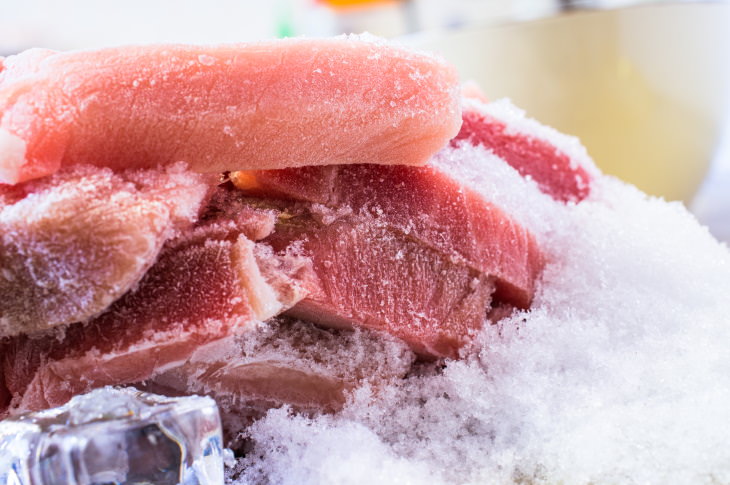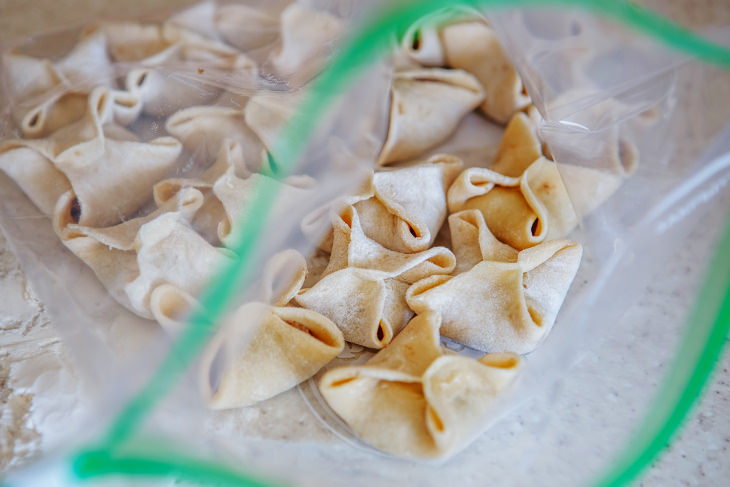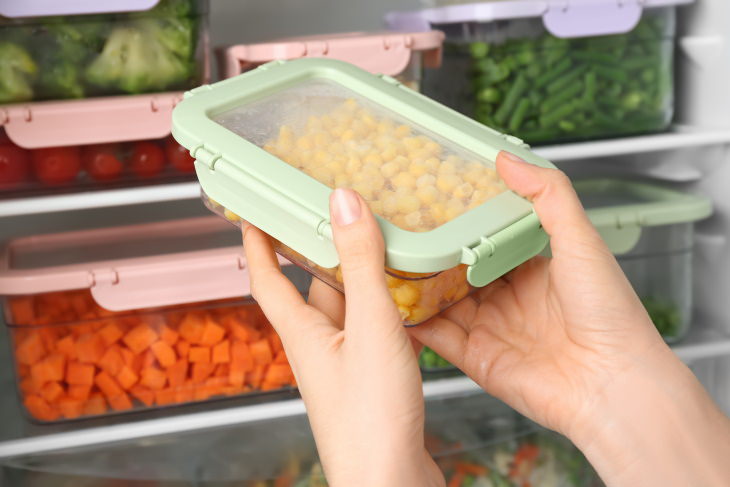

Freezer burn occurs when foods are not packaged and sealed properly, and water molecules start evaporating from the foods very quickly, forming ice crystals on their surface and destroying the natural texture of the foods. That’s how you get that leathery crust and ice on foods that have either been in the freezer for too long or weren’t properly wrapped up.
Generally speaking, freezer burn makes foods appear drier and less vibrant, and it can give foods a stale smell or taste too. Foods affected by freezer burn may also have white scale or crust on their surface. The longer a specific food is kept frozen, the more likely it is to develop freezer burn.
This is how freezer burn alters five common types of foods.
Fruits and vegetables have the highest water content of all foods, with some veggies, such as strawberries and celery, consisting of over 90% water. This is why freezer burn can dramatically alter the texture and integrity of frozen vegetables and fruit, causing toughness and flattened blotches. Thawed frozen fruit and veg will also lose their texture, as the ice crystals slowly cut and destroy their tissues.

Red meat. The tell-tale sign of freezer-burned meat is the color. Instead of the usual pink or red color, the meat will start browning and developing a grayish leathery crust. All cuts of meat and even ground meat are equally likely to develop freezer burn.
Poultry and fish also develop beige or grayish leathery crust as a result of freezer burn. Fish can develop freezer burn especially fast, so make sure to use it up as fast as possible. You will notice white or grey spots at the edges, or in the spaces where the food has been exposed to air. Poultry is also more likely than red meat or fish to develop an “off” flavor or smell.
Bread and pasta. Bread, rolls, pasta, and buns will have dry hard parts that remain dry even after you unfreeze them. They’re also likely to smell or taste different since bread is porous and it absorbs flavors very quickly. It’s especially important to pack baked goods well before you put them in the freezer, as regular bread bags usually have little holes in them to vent out the moisture and keep freshly-baked bread crisp.
Ice cream can get freezer burn too. You will notice that ice crystals start forming on the surface of the dessert, and the top layer of the ice cream will also become thicker or completely dehydrate. And for those of you wondering - yes, freezer burn is a legitimate reason to finish the entire tub of ice cream as soon as you can.

While freezer-burned foods may be safe to eat, the experience may be a lot less pleasant due to the texture and flavor changes. If you find freezer-burned foods unpalatable or bland, here are a few tips that will help you reduce the chances of freezer burn. First and foremost, set the freezer temperature to 0 degrees Fahrenheit (-17°C) or lower. This is not only safer for your health, but it will also preserve foods for a longer period of time.
To prevent freezer burn, follow these tips:
1. Keep your freezer half-full. An overfull freezer means more foods will stay in the freezer for a long time, so you’ll get more freezer burn too.
2. No air means no freezer-burned food. Freezer-safe food containers are better than plastic bags at keeping foods fresh. Zip bags are also fine, just make sure to squeeze out all the air before freezing.
3. Wrap up the food in an extra layer of plastic wrap or aluminum foil before sealing it in a container.
4. Avoid defrosting and refreezing foods several times.
5. Ice cream shouldn’t melt every time you crave dessert. Don’t leave the entire tub on the counter to thaw. Scoop out a portion into a bowl and put the entire carton back in the freezer!
6. Use frozen foods within a couple of months. If tracking dates is difficult, simply write down the date on the packaging with a permanent marker. Also make sure to keep the oldest frozen foods in the front, so that they get used up faster.
Share this information with family and friends!